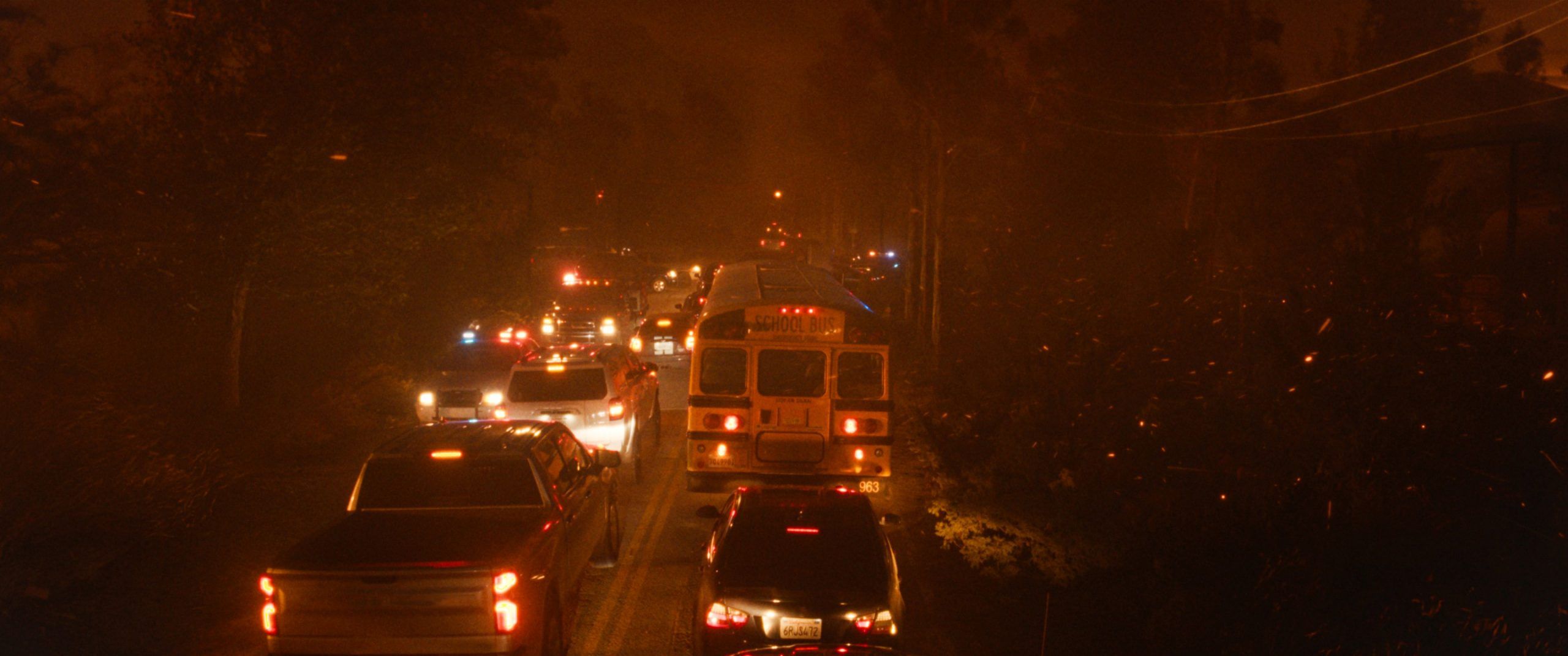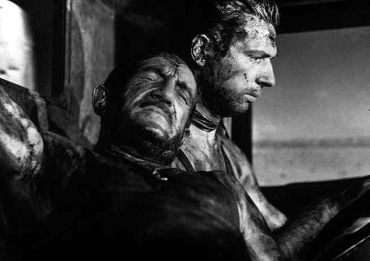
Men. Machines. Looming disaster.
It’s a trifecta of elements that pops up repeatedly in movies as diverse as Steven Spielberg’s stripped-down feature debut thriller Duel (1971), and the Keanu Reeves action fest Speed (1994).
It’s a subgenre relatable for anyone who drives. How often have you seen the suspense trope wherein, in a pivotal moment, the hero turns the key in the ignition, and the engine fails to turn over? You might call it a shopworn cliché, yet it almost invariably works … especially if you have endured a Canadian winter.
Most of us have been there.
It happens in a particularly crucial moment in Paul Greengrass’s new film The Lost Bus (premiering Oct. 3 on Apple TV+), a docudrama/disaster movie based on a true story of a school bus driver caught in the 2019 Northern California wildfire known as the Camp Fire, one of the most devastating fires in California history. With a cargo of 22 elementary school children and one teacher, the downward-spiralling driver Kevin McKay (Matthew McConaughey) must navigate the bus through panic-induced traffic jams, looters, and a spreading fiery holocaust.
Greengrass is the director who brought a sense of documentary immediacy to films such as United 93 and Captain Phillips and he is very much on his game here. His hyperactive camera simply flies all over the place (curiously reminiscent of Sam Raimi’s demonic POV shots in the Evil Dead movies), capturing the tinder-dry conditions in Northern California’s Butte County, where barely-maintained power lines strike the spark that will result in a holocaust.
The divorced McKay finds himself at a figurative crossroads, trying to reach out to his alienated son (Levi McConaughey, yep, Matthew’s son) and care for his addled mother (Kay McCabe McConaughey, yep, Matthew’s mom). When he is the only driver available to drive 22 stranded school kids to a safe haven, he rises to the challenge, a decision that puts himself and school teacher Mary Ludwig (America Ferrera) smack in the middle of hell on earth.
The drama, which made its big screen debut last month at the Toronto International Film Festival, is as intense a movie as you can handle.
Notwithstanding a few moments of gratuitous melodrama, it is, like Captain Phillips, a gripping portrait of finding heroism in unlikely places.
The granddaddy of this subgenre is Henri-Georges Clouzot’s 1953 existential suspense movie The Wages of Fear (The Criterion Channel, Internet Archive), a 1953 French epic — 147 minutes long — about four men who enlist themselves in a deadly mission to transport two truckloads of nitroglycerine to the site of an oil well fire over hundreds of kilometres of bad road.
It’s been remade, first by William Friedkin as Sorcerer (1977, on the Criterion Channel) and last year as a very contemporary French action movie titled The Wages of Fear (on Netflix), so slick and fatuous as to rightly be considered blasphemy by French cineastes.

The original is the one to see, of course. Shot in glorious black and white, it stars an insouciant Yves Montand (his starring debut) as Mario, a mysterious French expat doing time hiding out in plain sight in a Venezuelan town, where foreigners find themselves trapped by poverty and a lack of a visa. (Think: Casablanca for roughnecks.) Mario is initially impressed by newcomer Jo (Charles Vanel), a presumed criminal kingpin seeking refuge. But when Jo and Mario sign on with two others to move the nitro, the relationship sours in the face of Jo’s well-hidden cowardice.
One might consider the 2021 action film The Ice Road (on Crave) as yet another Wages of Fear remake. Brit writer-director Jonathan Hensleigh saw it at an impressionable age and subsequently wrote films such as Armageddon, Jumanji and Die Hard with a Vengeance, all of which feature ill-assorted adventurers taking on a complex and deadly mission.
Hensleigh was also inspired by the reality series Ice Road Truckers (on StackTV).
But he wasn’t quite so committed that he wanted an anti-hero. Hence, Liam Neeson is the entirely heroic driver assigned to help take three semi trailers loaded with cast iron wellheads to far-northern Manitoba, where a diamond mine collapse is threatening to slowly extinguish the lives of the miners trapped inside.
Hensleigh is no Clouzet when it comes to depicting the white-knuckle dynamics of men and machines locked in a grim battle for survival. But even so, the film was evidently popular enough to spawn a sequel. Ice Road: Vengeance is currently climbing up the most-watched charts on Crave.
randall.king.arts@gmail.com


